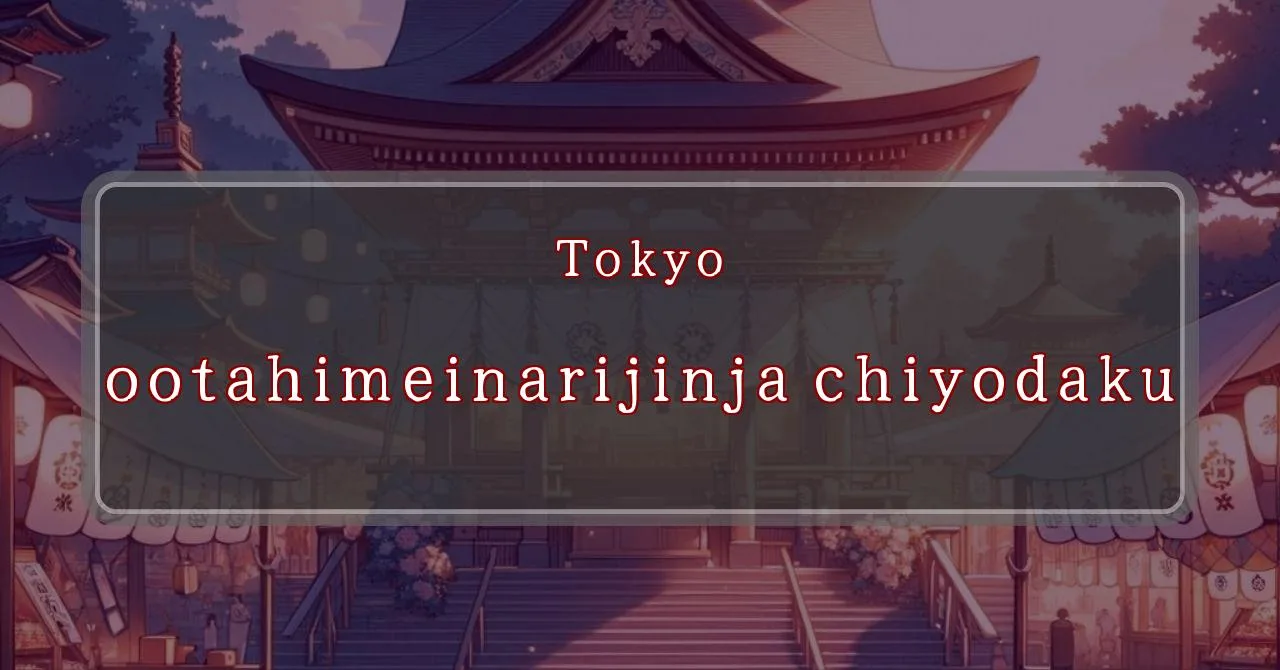Vivid vermilion shrine, guardian of Kanda
Basic Information
Otahime Inari Shrine is a Shinto shrine located in Kanda Surugadai, Chiyoda-ku, Tokyo, Japan.
- Address: 1-2-3 Kanda Surugadai, Chiyoda-ku, Tokyo 101-0062, Japan
- Phone Number: 03-3251-0753
- Access: 2-minute walk from Ochanomizu Station, Chiyoda Line
- Festival Days: May 15th, 2024 (Reiwa 6)
Main Events and Attractions of the Festival
The Otahime Inari Shrine Festival is a vibrant and lively event that attracts many visitors each year. The main events and attractions of the festival include:
Mikoshi Procession
One of the highlights of the festival is the mikoshi procession. A mikoshi is a portable shrine that is carried through the streets by a group of people. The Otahime Inari Shrine mikoshi is a large and ornate structure, and it is carried by a team of dozens of people. The procession is a colorful and lively sight, and it is a great opportunity to experience Japanese culture and tradition.
Kagura Performance
Kagura is a traditional Japanese dance that is often performed at Shinto shrines. During the Otahime Inari Shrine Festival, a kagura performance is held on a stage in front of the shrine. The performance is accompanied by traditional Japanese music, and it tells the story of the shrine’s founding.
Food Stalls
No Japanese festival is complete without food stalls! During the Otahime Inari Shrine Festival, there are many food stalls selling a variety of delicious Japanese dishes. Some of the most popular dishes include yakitori (grilled chicken skewers), takoyaki (octopus balls), and taiyaki (fish-shaped cakes filled with sweet red bean paste).
Games and Activities
There are also a number of games and activities for children at the festival. These include traditional Japanese games such as ring toss and goldfish scooping. There are also rides and other attractions for children to enjoy.
Blessings and Deities
Otahime Inari Shrine is dedicated to the deity Ukanomitama no Mikoto, the god of rice and agriculture. Inari shrines are found all over Japan, and they are often visited by people who are praying for good harvests, business success, and prosperity.
- Ukanomitama no Mikoto: God of rice and agriculture
- Inari: Shinto deity of rice and prosperity
Origin and History
The origins of Otahime Inari Shrine are unclear, but it is believed to have been founded in the 15th century. The shrine was originally located in Edo Castle, but it was moved to its current location in the 17th century. The shrine was destroyed by fire in the 19th century, but it was rebuilt in the early 20th century.
- Founded: 15th century
- Original location: Edo Castle
- Current location: Kanda Surugadai, Chiyoda-ku, Tokyo
- Destroyed by fire: 19th century
- Rebuilt: Early 20th century
Tips and Notes for Visitors
Here are some tips and notes for visitors to Otahime Inari Shrine:
- Hours: The shrine is open from 9:00 AM to 5:00 PM every day.
- Admission: Admission to the shrine is free.
- Dress code: There is no specific dress code for visiting the shrine, but it is considered respectful to dress modestly.
- Photography: Photography is permitted inside the shrine, but please be respectful of other visitors.
- Smoking: Smoking is not permitted inside the shrine.
Parking Information
There is no parking lot at Otahime Inari Shrine. However, there are several public parking lots nearby.
- Ochanomizu Station Parking Lot: 2-minute walk from the shrine
- Kanda Station Parking Lot: 5-minute walk from the shrine
- Surugadai Parking Lot: 10-minute walk from the shrine
Popular Stalls and Food Carts in Recent Years
| Type of Stall | Description |
|---|---|
| Takoyaki | A staple at Japanese festivals. Characterized by a crispy outside and a creamy inside. |
| Jaga Butter | A simple yet popular snack of hot potatoes lavishly topped with melted butter. |
| Baby Castella | Small castella cakes, sweet and fluffy treats enjoyed by children and adults alike. |
| Grilled Ayu with Salt | Fresh ayu fish grilled whole with salt, a savory taste of Japanese summer. |
| Shaapin | A unique gourmet item influenced by foreign cuisine, with a chewy skin wrapping the filling. |
| Okonomiyaki | A Japanese grilled dish where you often choose your own ingredients for a personalized flavor. |
| Cotton Candy | A fluffy, sweet snack that’s extremely popular with children. |
| Chocolate Banana | A banana coated in chocolate, a fun and visually appealing dessert. |
| Kushiyaki | Various types of ingredients skewered and grilled, an easy-to-enjoy snack. |
| Yakisoba | Fried noodles mixed with a special sauce, a fast food favorite in Japan. |



